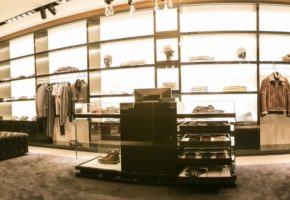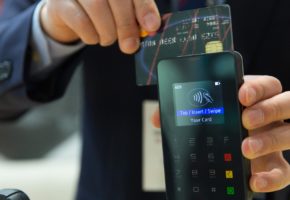[frame_center src=”http://www.alliedwallet.com/wp-content/uploads/blog-post-images/MicrosoftLogoNewLogoBright.jpg”][/frame_center]
In 2009, Microsoft’s Office Labs released a video predicting how productivity might look in ten years and today the sequel was unveiled. With flashy, persistent graphic projections, Office Labs predicts that this encompassing, graphic stimulus will seamlessly inform us of everything that is happening with endless copy-and-paste operations connecting myriads of translucent, credit-card-sized, glasses-free, 3d-capable, web-connected smart-devices. And while this is exciting, what interests us at Allied Wallet is what commerce and digital transactions will look like in this not so distant future.
After examining the YouTube clip produced by Microsoft, we see only two transactions take place and they can be easily overlooked in the six-minute piece.
In one transaction, a man’s phone transcribes a voicemail message that it has seamlessly connected to a pending order of his. On his smart-device, he completes the order by selecting his preferred quantity and pressing “Place Order” on the touchscreen. With this clip, Microsoft is implying that data points, contacts, and e-transactions will be seamlessly identifiable, tractable, and executable.
Modern society has become accustomed to a world of PCI or bank-issued “plastic cards” in tote. Consumers are currently on the vanguard of payment innovations led by companies like Google, American Express, Paypal, Square, and Allied Wallet and each of us have a vision of digital commerce that blurs the lines between brick-and-mortar and e-commerce sales.
In the second transaction, a man interacts with a digital billboard on a train platform. He donates $20 HKD to a benefit concert instantly without entering any payment or banking information. He simply points his smart-card device at the screen and wills his donation. The screen politely shows a “Thank You” message and he quickly examines some donation statistics while the train approaches. The interesting part from a technological standpoint is that the phone knows where the billboard is and correctly connects the user to the appropriate campaign on his device. Whether it is location-based or a captured image, both devices create an engaging and seamless digital transaction.
Capturing a potential consumer and quickly leading them through checkout before that train, cab, or bus takes them away will be an interesting and time-sensitive process. The user was not required to enter complex payment information like account and pin numbers which would potentially expedite, simplify, and safen the process.
Soon enough, plastic credit cards will be outdated. The technology is upon us. Imagine going to a coffee shop and paying with Square’s card case, a phone application that enables you to pay for items without having to take out your credit card or wallet.
While only in infancy in the US, these smart-phone applications have been maturing overseas in Japan and Hong Kong. What is interesting is that these transactions come with risks as well as simplicity. As our simple-to-use devices become tremendously technologically complex, security and privacy will both become issues. Some of these transactions require us to provide details like our location and our payment information and this can leave us at a point of vulnerability. Allied Wallet continues to observe, plan, and innovate in the spaces where payment products of the future are conceived and developed.






